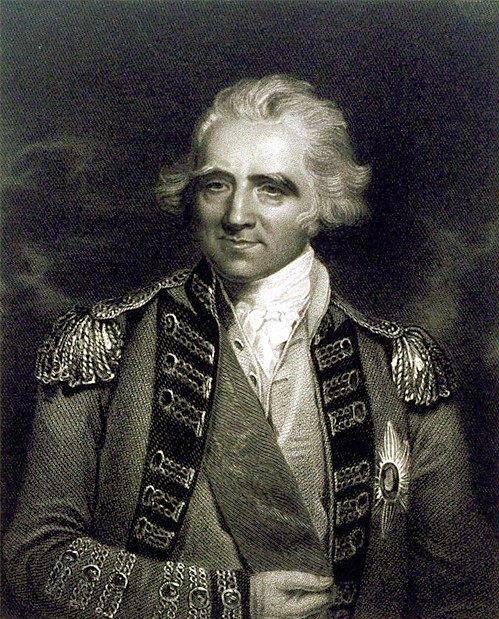Get Today in Masonic History into your Inbox. Sign up today for one of our email lists!
Need an article for your Trestleboard/Newsletter see our Use Policy
Ralph Abercromby is Born

Today in Masonic History Ralph Abercromby is born in 1734.
Ralph Abercromby was a Scottish soldier and politician.
Abercromby was born on October 7th, 1734 in Menstrie Castle, Clackmannanshire, Scotland. He was educated at Rugby School, a co-educational school in Rugby, England. He went on to the University of Edinburgh before being sent to Leipzig University in Germany. At Leipzig University he studied civil law with the idea of pursuing a career as an advocate.
When he returned from Germany he expressed a strong desire for Military service. In March of 1756 a commission was secured for him in the 3rd Dragoon Guards. He served with his regiment in the Seven Years' War. During his service he had the chance to study Frederick the Great. His studies formed and shaped his military character and tactical ideas.
By 1773, he had been promoted to Lieutenant Colonel. In 1780 he was made a brevet Colonel before being fully promoted in 1781. In 1783, his unit was disbanded and he retired from the service on half pay. Before retiring he barely served in an active status due to his political disagreements with governments policies. Specifically he had sympathies for the American colonists. It is believed he retired from the military at the time he did, in part because of those sympathies.
After leaving the service, Abercromby briefly served in Parliament. He found the role unpleasant and before long returned to Edinburgh to focus on educating his children.
In 1793, when France declared war on England, he resumed his military duties. He was assigned under the Duke of York in the Netherlands. In 1794 he was wounded at the Battle of Boxtel. In 1795, he was made commander in chief of the British forces in the West Indies.
In 1796, Grenada was taken under Abercromby's orders. He also went after the islands of Saint Lucia, Saint Vincent and Trinidad. On Saint Vincent, based on the scale of other battles he was involved in during his career, it was a small. In battle, one of his men killed the Garifuna Chief, Joseph Chatoyer. The battle is still remembered on Saint Vincents, as Chatoyer is a national hero.
In 1797, he headed to Puerto Rico. There he invaded the island with 7,000 to 13,000 men. He also had a fleet of about 60 ships. After several weeks of fighting he was finally able to break through the lines before withdrawing.
When he returned to Europe he was rewarded for his efforts by being appointed as colonel of the Scots Greys, a cavalry regiment of the British Army. He was also entrusted with the governments of the Isle of Wight, Fort-George and Fort-Augustus. He was also raised to the rank of Lieutenant-General. From 1797 to 1798 he was named the commander-in-chief of the forces in Ireland.
After holding the position of commander-in-chief in Scotland, he was called again under the Duke of York for the campaign of 1799, also known as the Anglo-Russian invasion of Holland. The campaign ended badly, most accounts, including those who are critical of Abercromby, state even a victory could not have proved his talents any more.
In 1801, he was sent to recover Egypt from the French. At the Battle of Alexandria, he was injured. Seven days later on March 28th, 1801 he passed away from his wounds on board the HMS Foudroyant which was moored in the harbor.
Abercromby was a member of Canongate Kilwinning Lodge No 2, Edinburgh, Scotland.
This article provided by Brother Eric C. Steele.

